Bald Eagle 2016 Season Summary, Banding, Transmitters

Grace Remains at Big Bethel Reservoir 5/28/2016
May 30, 2016
Grace Flies Back to North Carolina June 3, 2016
June 6, 2016Productivity:
The bald eagle breeding season for 2016 is coming to a close in Chesapeake, Norfolk, and Virginia Beach . Many of the nestlings have now fledged and those who have not are exercising in their nest with some of them out of their nest on nearby branches. This was a productive season, especially considering that more than half of the 27 active nests are in urban locations. Of the 27 known monitored nests, 25 produced 48 chicks for an average of 1.92 chicks per productive nest.
Active Nests Productive Nests Chicks
Chesapeake 9 8 11
Norfolk 2 2 4
Virginia Beach 16 15 33
Totals 27 25 48
Banding and Transmitters:
The Center for Conservation Biology (CCB) this breeding season banded 15 nestling bald eagles and fitted 12 with GSM/GPS (cell technology) transmitters. Each chick was banded on the right leg with a US Geological Survey uniquely numbered band, and on the left leg with a purple coded band (denoting from the Chesapeake Bay region). The banding and transmitters were accomplished under a contract with the Department of Defense. The banding was done at six nest locations, one on US Navy property, one at a Virginia State Park, and 4 on private property (one in Norfolk and three in Virginia Beach). The GSM/GPS solar powered transmitters are made by Microwave Telemetry, Inc. and operate on digital cellular phone networks. CCB expects to provide location updates in the future.
Purple bands used were RB, RC, RD, RE, RH, RK, RM, RN, RP, RR, RS, RU, RV, RW and RX.
During the banding operation two nestlings with injuries were removed from separate nests on private property and sent to Dr Tony Poutous at Midway Veterinary. One chick had fish line tightly wrapped around its ankle and the other had a broken leg sustained in its nest. Both eaglets are in the care of Pearl Beamer at Sacred Friends Wildlife Rehabilitation and are healing well. Both are expected to be released in the near future.
At one of the private property locations, a week after banding the two chicks, the nest fell to the ground leaving the chicks standing on about a dozen sticks. One of the chicks (RW) fell into a dense patch of poison ivy and greenbrier beneath the nest tree and was rescued and taken to Sacred Friends and will be released soon. The other chick (RX) was able to fly and is being cared for by both of its parents.
The Center for Conservation Biology wishes to thank the property owners for their cooperation in allowing access to the nests on their property. We are grateful for the assistance from the several dedicated eagle nest observers who monitored these nests for CCB. Thank you.

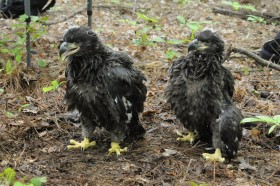

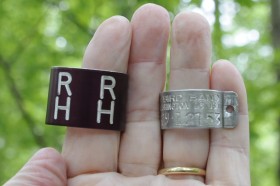
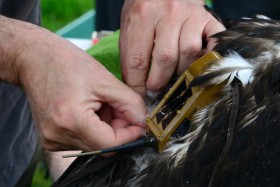
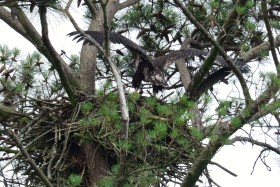
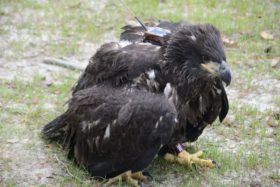
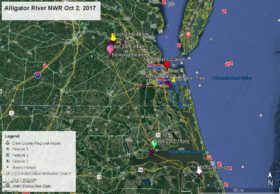
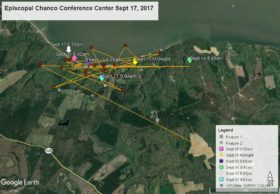
7 Comments
Enjoyed reading your update with all the information about all you do for Eagles …. Thank you for sharing and God Bless all of you for the work you do for our National symbol…. The American Bald Eagle….
Thank you so much CCB and Reese for your dedication and also for providing this report.
Thank you to the CCB Team for making this all come together!
Thanks to all who made this possible.
Reese, it’s fantastic to hear of the success of the local nests there in a very developed area. Congratulations to those nesting adults for a super job raising their young!! Thanks to CCB and the Dept of Defense for their work and investment to further our knowledge and understanding!
Great report Reese! Thanks for all the good work that you and CCB accomplish.
How are the eagles after Hurricane Matthew? How are the eagles on Culfor Cres. in Norfolk, VA?
received report from 3 nests that eagles present. No news from Culfor